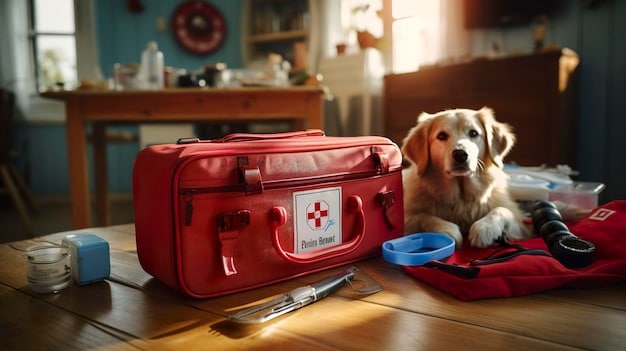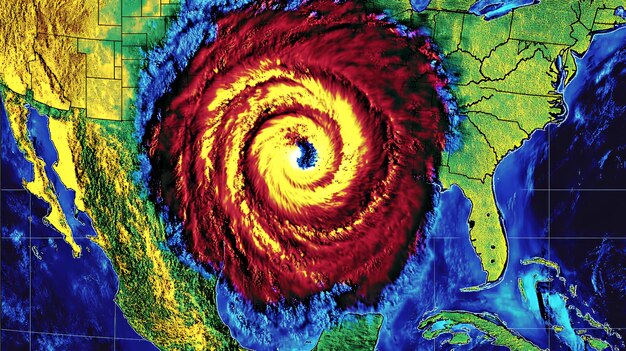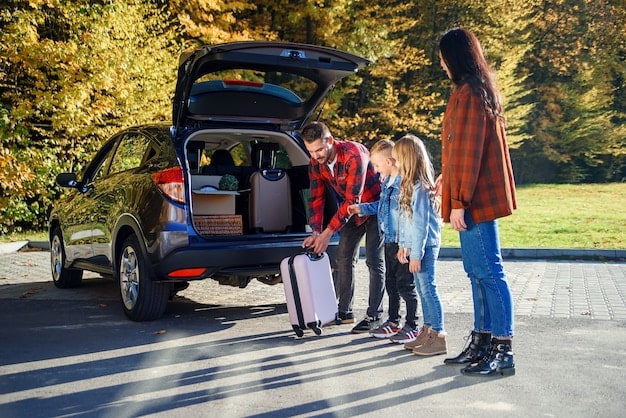Disaster Prep: Your Pet’s Emergency Preparedness Guide

Emergency preparedness for pet owners involves creating a comprehensive plan that includes identification, evacuation strategies, a pet-friendly emergency kit, knowledge of local resources, and training to ensure your pet’s safety during disasters.
Being prepared for disasters is crucial, and it’s just as important to include your furry, scaled, or feathered family members in your plans. Emergency preparedness for pet owners: how to keep your pets safe during disasters involves more than just stocking up on extra food; it’s about creating a solid plan to ensure their safety and well-being when the unexpected happens.
Understanding the Risks: Identifying Potential Disasters
Before crafting your pet disaster plan, it’s vital to understand the types of disasters that could affect your area. From natural events to man-made emergencies, knowing the risks will help you tailor your preparedness efforts to suit specific scenarios.
The US is prone to a variety of disasters, each requiring a unique preparedness approach. Here are some common ones:
- Hurricanes: Coastal regions are susceptible to these powerful storms, bringing heavy rain, strong winds, and potential flooding.
- Wildfires: Particularly in the Western states, wildfires can spread rapidly, threatening homes and causing widespread damage.
- Earthquakes: Areas along fault lines face the risk of earthquakes, which can cause structural damage and trigger other disasters like landslides.
- Floods: Both coastal and inland areas can experience flooding due to heavy rainfall, overflowing rivers, or storm surges.
- Tornadoes: The Midwest is known for tornadoes, with high winds that can cause significant destruction in a matter of minutes.
Identifying these potential disasters will inform your preparedness strategy, making sure it’s practical and effective.
Knowing what disasters are likely to occur in your region is the first step in developing a tailored plan. Consider the specific needs of your pet and how these disasters might affect them. This mindful consideration ensures you’re not caught off guard, allowing you to act swiftly and protect your beloved companions.

Identification is Key: Ensuring Your Pet Can Be Found
One of the most crucial steps in pet disaster preparedness is ensuring your pet has proper identification. If you and your pet become separated, having the right ID can significantly increase the chances of a happy reunion.
Microchipping: A Permanent Solution
A microchip is a small, electronic chip implanted under your pet’s skin, containing a unique identification number. Vets and shelters can scan this chip to find your contact information in a linked database.
Collar and Tags: Immediate Identification
Even with a microchip, a collar with up-to-date tags is essential. Include your pet’s name, your phone number, and any critical medical information.
Registration: Keeping Information Current
Ensure your pet’s microchip and tag information are registered and up-to-date. If you move or change your phone number, update these records immediately.
Proper identification is a proactive measure that speaks volumes in times of crisis. These steps will help reunite you with your pet, providing you and your family with peace of mind no matter what emergency unfolds.
Creating an Evacuation Plan: Where Will You Go?
Having a solid evacuation plan is paramount, especially when a disaster strikes. This involves knowing where to go, how to get there, and having arrangements in place to accommodate your pets.
Pet-Friendly Shelters and Hotels
Many traditional emergency shelters do not accept pets, so it’s essential to identify pet-friendly alternatives. Keep a list of pet-friendly hotels and shelters along your evacuation routes.
Evacuation Routes and Transportation
Plan multiple evacuation routes in case one is blocked. Ensure you have appropriate carriers for your pets and that your vehicle is ready for transport.
In your evacuation plan, consider the following points:
- Identify multiple evacuation routes: Familiarize yourself with various routes from your home in case your primary path is blocked.
- Pet-friendly lodging options: Compile a list of pet-friendly hotels, motels, and boarding facilities along your potential evacuation routes.
- Transportation arrangements: Ensure that you have suitable pet carriers or crates for safe transport.
A well-thought-out evacuation plan can make all the difference in safely relocating with your pets during a disaster. Prepare, plan, and practice to keep your whole family safe.

Assembling a Pet Emergency Kit: Essentials for Survival
A well-stocked pet emergency kit is crucial for ensuring your pet’s well-being during and after a disaster. This kit should contain everything your pet needs to survive comfortably for several days.
Food and Water: Sustaining Your Pet
Pack a supply of food and water that will last at least three to seven days. Store dry food in airtight, waterproof containers, and include a manual can opener if you’re bringing canned food.
Medication and First Aid: Addressing Health Needs
Include any necessary medications, along with a pet first-aid kit. This kit should contain items like antiseptic wipes, bandages, and any specific medications your pet needs.
Comfort Items: Reducing Stress
Pack items that will help reduce your pet’s stress, such as their favorite toys, blankets, or bedding. Familiar items can provide a sense of security and comfort during a stressful time.
Here are the vital items to include in an emergency kit:
- Food and Water: Enough for at least 3-7 days, stored in waterproof containers.
- Medications: Any prescription drugs your pet needs, along with a pet first-aid kit.
- Comfort Items: Toys, blankets, or bedding to reduce stress.
- Waste Disposal: Bags, litter, or cleaning supplies for managing pet waste.
Having these essentials readily available can significantly improve your pet’s comfort and safety during a disaster situation.
Knowing Your Resources: Local Support and Services
During a disaster, knowing where to turn for help is essential. Understanding the local resources available to pet owners can make a significant difference in ensuring your pet’s safety and well-being.
Emergency Veterinary Services
Identify local veterinary clinics that offer emergency services. Keep their contact information readily available, and know the fastest routes to reach them.
Local Animal Shelters and Rescue Organizations
Connect with local animal shelters and rescue organizations that can provide support and temporary housing for pets during emergencies.
Community Networks and Support Groups
Join local pet owner groups or community networks that can offer assistance and support during a disaster. Sharing resources and information can be invaluable.
Effective planning involves more than just individual preparation; it also requires a community-focused approach. Knowing and engaging with local resources can provide essential support and services for your pets during times of crisis.
Training and Drills: Practicing Your Plan
Having a plan is one thing; practicing it is another. Training and drills are essential to ensure that both you and your pets are prepared and know what to do when a disaster strikes.
Evacuation Drills
Conduct regular evacuation drills to familiarize your pets with the process. Practice loading them into carriers and evacuating your home quickly and safely.
Basic Command Training
Ensure your pets know basic commands such as “come,” “stay,” and “quiet.” These commands can be critical for managing your pets in stressful situations.
Acclimation to Carriers and Crates
Help your pets become comfortable with their carriers or crates. Make these spaces positive experiences by placing treats and toys inside.
- Frequent Drills: Make evacuation drills a routine to keep your pets familiar with the process.
- Command Reinforcement: Ensure your pets respond to basic commands even under stress.
- Carrier Comfort: Create positive associations with carriers and crates by making them cozy and inviting.
Regular training and drills can transform a good plan into effective action. Practice makes perfect when it comes to keeping your pets safe during a disaster.
| Key Point | Brief Description |
|---|---|
| 📍 Identify Risks | Understand potential disasters in your area to tailor preparations. |
| 🆔 Ensure Identification | Microchip, collar, and up-to-date tags are essential for quick reunions. |
| 🎒 Prepare Kit | Pack food, water, medication, and comfort items for several days. |
| 🗺️ Plan Evacuation | Identify routes and pet-friendly lodging for quick and safe relocations. |
Frequently Asked Questions
▼
Assess the situation, ensure your safety and your pet’s, and initiate your evacuation plan if necessary. Keep calm and follow your pre-established procedures.
▼
Check and update your pet’s emergency kit at least twice a year, typically when you change your clocks for daylight saving time, to ensure food and medications are fresh.
▼
Tailor your emergency plan for each pet, accounting for their specific needs and sizes. Make sure to have enough supplies for all of them and carriers if feasible.
▼
Keep your pet close, speak in a calm voice, and provide familiar comfort items. Maintaining a routine as much as possible can help them feel more secure.
▼
Contact local shelters and vets, post on social media with a clear photo, and check lost pet websites. Use your pet’s microchip information to aid in their identification.
Conclusion
Emergency preparedness for pet owners: how to keep your pets safe during disasters is an ongoing process that requires consistent effort, planning, and commitment. By taking proactive steps, you can greatly improve your pet’s safety and well-being during unforeseen events, ensuring they remain a cherished part of your family for years to come.





